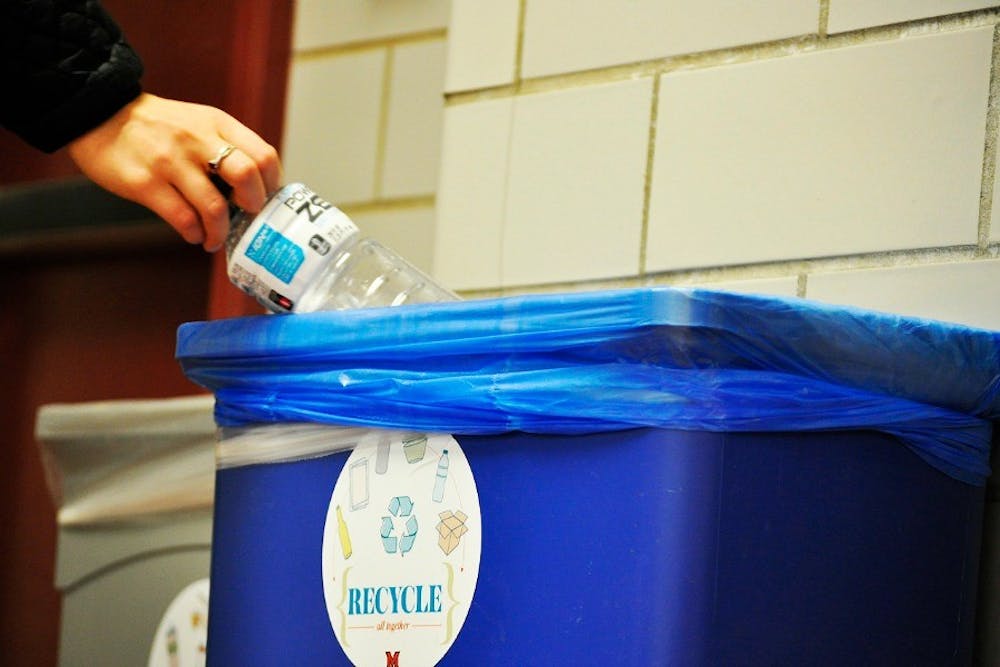Photo by Kim Parent
"Climate change is real! While we're all obsessed with deflategate, lets keep in mind that there's something about which you should give a f**k," scientist Bill Nye said in a video published on the website Funny or Die last Monday, Jan. 26.
It turns out that college students do.
According to a recent survey by The Princeton Review, 69 percent of college students want their universities to try and prevent further climate change.
Calculated by students in the Institute for the Environment and Sustainability, Miami University's carbon footprint is about 137 thousand metric tons of CO2 equivalent per year - enough carbon dioxide to fill Miami's picturesque Tri-Delt sundial five times a day per person.
"This doesn't just go away," Miami Director of Sustainability and Energy Conservation Yvette Kline said. "Its impacts are going to be felt worldwide."
Confronted with a reading list larger than most of bank accounts, MU students may feel like their sustainable-living selections are restricted, but there are a plethora of ways they can slash waste and live greener lifestyles.
One of the simplest and most abundant ways students can do this is by recycling.
According to the Department of Sustainability and Energy Conservation, every person on Miami's campus is going to be responsible for about 380 pounds of solid waste a year. Students have to decide whether they should be recycling that waste or putting it in the trash.
"We have a system in place with our blue recycling bins," Kline said. "There are a wonderful assortment of items that can all go in together to make it as easy as possible."
Four times a year, Miami checks its trash diversion rate - the amount trash recycled divided by the total amount of trash. Currently, Miami is at a 25 percent rate of recycling.
Miami established a new generation of environmental sustainability last semester with the three new residence halls on Western Campus that run on solely geothermal energy. Geothermal heating and cooling systems are 400 percent more efficient than electric-powered cooling and heating by natural gas.
According to Kline, the rest of the campus would benefit from thinking about how they are using fuel.
"A simple thing like dressing for indoor environments that support energy conservation is a step that students can take," Kline said. "Maybe you could be comfortable in a room that's 68 degrees if you have a sweater on."
During the warmer month's, one of the best ways that students can help reduce their carbon footprint is walking or riding a bike to class.
"Pay attention to the pathways that have been set up for both pedestrians and cyclists," Kline said.
Last spring Miami installed new cycling lanes running north and south on Patterson Avenue and east to west on Spring Street in order to make riding a bike around campus easier for both cyclists and pedestrians.
"Another thing that students don't think about is the energy in water," Kline said. "There's a big energy component, especially in hot water, and that means burning fossil fuels and a greater carbon footprint."
It requires a tremendous amount of energy to pump water from its source to Miami's more than one hundred academic, residential, administrative and athletic buildings and something as small as taking a minute or two off a daily shower can help. Nevertheless, for those who want to do more, a group of students at the University of East Anglia, UK have the answer - pee in the shower.
The Go With The Flow campaign encourages people to use their morning shower to save 12 liters of fresh water from flushing the toilet and has even been praised by the Today show; however, turning off the tap while brushing your teeth or creating an efficient laundry schedule works just fine.

